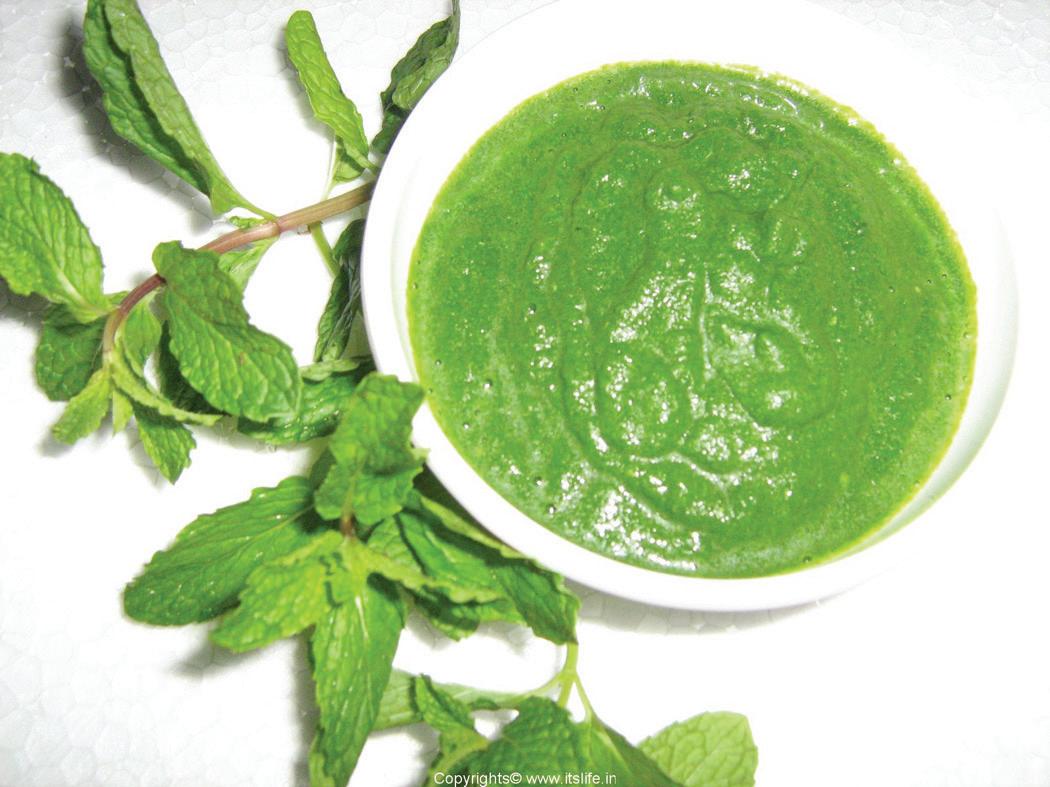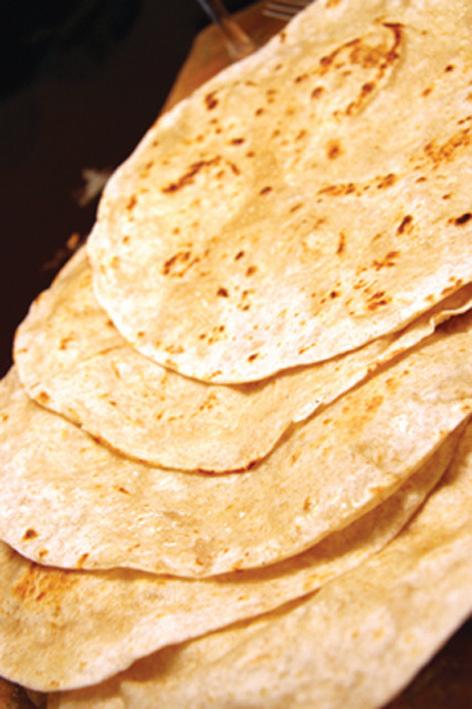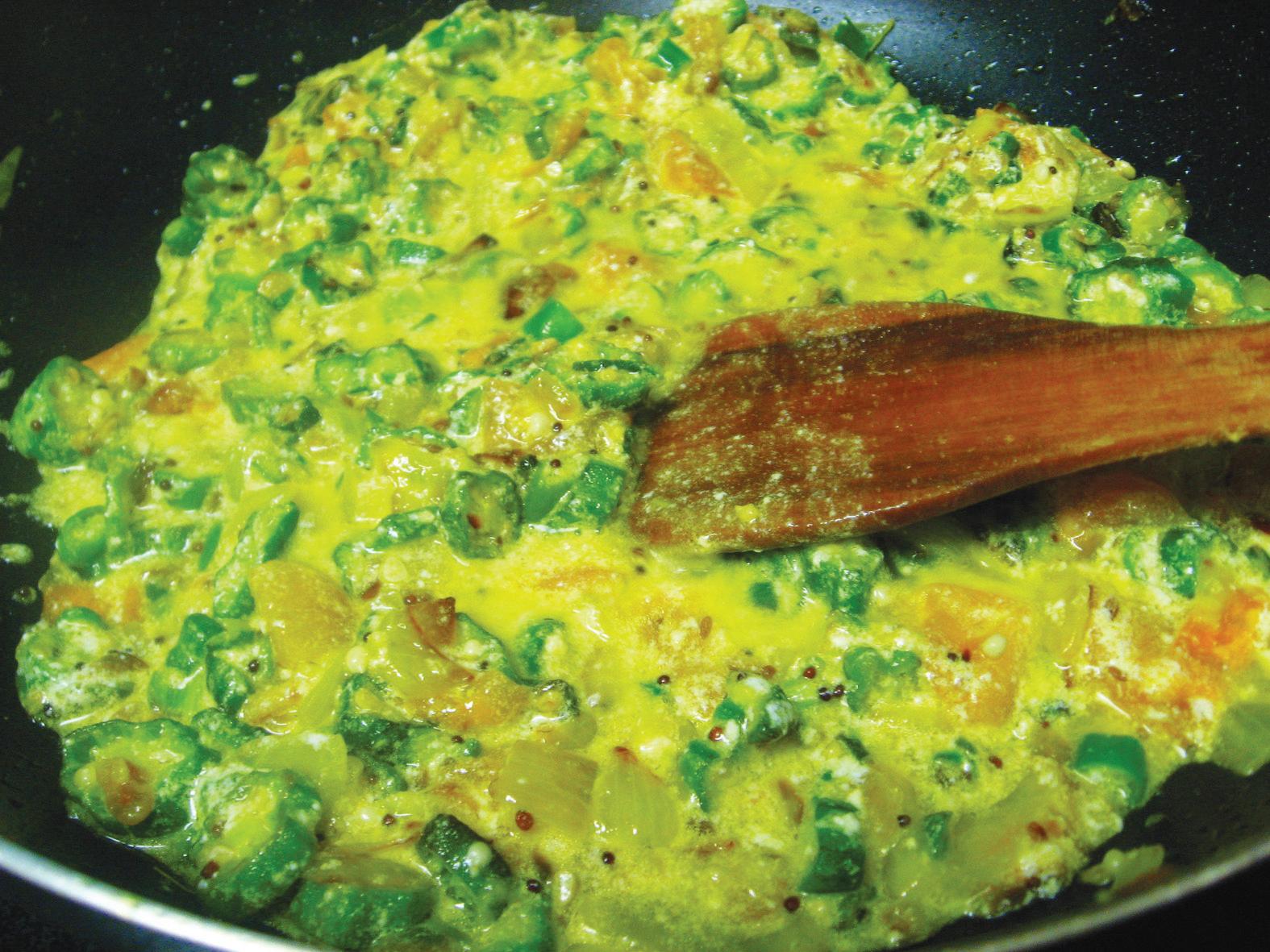
4 minute read
A vegetarian summer treat
from 2009-11 Sydney (2)
by Indian Link
By SHAFEEN MUSTAQ
Ihave never been a big fan of dairy, less so in my curries. So when a friend of mine earnestly proclaimed Dahi bhindi made him “weak in the knees” my first response was “ew”. But my curiosity got the better of me and I asked him for the recipe for this okra dish, cooked in a yoghurt sauce.
It’s surprisingly quick and easy to make and when served to my dad, who has been spoilt by the best cook in the world (my mum), it was polished off in record time. Thank you Nishi for encouraging me to step out of the square! A cool and refreshing dish on a hot summer’s day.
Dahi bhindi is a versatile dish with a lot of the components being replaceable and some you can omit based on your palette. I prepared it as part of meal that included Lehsuni dal (garlic flavoured lentils), and mint chutney.
And as every good desi cook knows, what’s the point of measuring things when you can throw in a pinch or a dollop and it all comes together beautifully!
Dahi Bhindi
(Okra in yoghurt sauce)
500 gms okra, tops and tails removed and then cut into 1” pieces
3 tbsp vegetable/ canola/ sunflower cooking oil
1 tsp cumin seeds
1/2 tsp onion seeds
2 large onions cut into slices
2 large tomatoes cut into cubes
2 tsp coriander
1 tsp cumin powder
1/4 tsp turmeric powder
1/2 tsp red chilli powder
3 tbsp yogurt
Salt to taste
Chopped fresh coriander to garnish
Heat the oil in a deep pan and add the cumin and onion seeds. When they stop spluttering, add the sliced onions. Fry till the onions are golden. Add all the spices and stir well. Fry for 2-3 minutes. Now add the okra and mix. Cook for 3-4 minutes.
Add the tomatoes, yogurt and salt to taste and mix well.
Cook till okra is soft. Garnish with chopped coriander and serve with hot chapatis (Indian flatbread) and Lehsuni dal (garlic flavoured lentils) without my favourite chutney, the one my mother makes so well...
1 bunch fresh mint leaves
2 green chillies
1 tbsp tamarind pulp
Salt to taste
A little water
Chapati
into a bowl and add a little water to the pulp. Wash the mint leaves well and grind it to a smooth paste along with green chillies, salt and tamarind juice. Add water to your chutney if the mixture is too thick and mix well
Dahi bhindi is best served with the staple chapati. Chapatis are one of the most common forms in which wheat, the staple of northern South Asia, is consumed. Chapati is a form of roti or bread. The words are quite often used interchangeably. While roti refers to any flat unleavened bread, chapati is the word used to describe a roti made of whole wheat flour and cooked on a tava or flat skillet.
To make a dozen chapatis, all you need is:

2 cup whole wheat flour
1 tsp salt
3/4 cup water
Mix the flour and salt into a bowl. Add the water and mix to a stiff dough; knead well until the dough feels firm and elastic. Place in a greased plastic bag or in grease proof paper and leave in a warm place for 30 minutes. Turn onto a floured board, shape the dough into a long roll, and divide into 12 equal slices. Roll out paper thin. Heat the heavy frying pan and when very hot, cook the chapatis for about one minute on either side. Cool between paper towels.
For best results chapatis should always be cooked fresh
Lehsuni daal

Lentils don’t get much respect now and haven’t for centuries. One of the first crops cultivated by man, they have been a food source for over 8000 years. Through much of that time they have been considered the food of the poor people.
But we desis love our dal and with good reason. Nutritionists consider lentils a great substitute for meat because they are high in protein and loaded with minerals. One hundred grams of lentils has as much protein as 134 grams of beef. Of the dried vegetables the lentil is second only to the soybean in protein content. One cup of boiled brown lentils provides 38 mg. calcium, 356 mg phosphorus, 72 mg magnesium, 360 mcg folacin, 6.6 mg. iron, 731 mg potassium, and 10 grams dietary fibre. Lentils sold as dal have their outer skins removed and are lower in fibre than other varieties.
Made with masoor dal (orange lentils)
Lehsuni dal is simple and very tasty. It is in fact almost a staple in most homes. It makes a great accompaniment for plain boiled rice and a vegetable or meat dish. The recipe provided here makes enough for 2-3 servings.

1 cup masoor daal
3 cups water
2 tbsp vegetable/sunflower/canola cooking oil
Salt to taste
1 onion chopped fine
1 tomato chopped fine
1/2 tsp turmeric powder
1/2 tsp red chilli powder
3 tbsp ghee (clarified butter)
3 dry red chillies stalks removed and broken into small pieces
1/2 tsp asafetida
1 tsp cumin seeds
8-10 cloves of garlic
Wash the dal thoroughly.
Mix the dal, water, cooking oil, turmeric powder, red chilli powder, salt to taste, onion and tomato in the pressure cooker or a deep pan and boil till the lentils are very soft.
In another small pan, heat the ghee well and add the cumin seeds which will sizzle. When they stop sizzling add the garlic and dry red chillies and fry till the garlic is light brown. Add the asafetida and turn off the fire.
Quickly add this ghee and spice mixture to the boiled dal and stir well.
Serve piping hot with your dahi bhindi and chapatis

